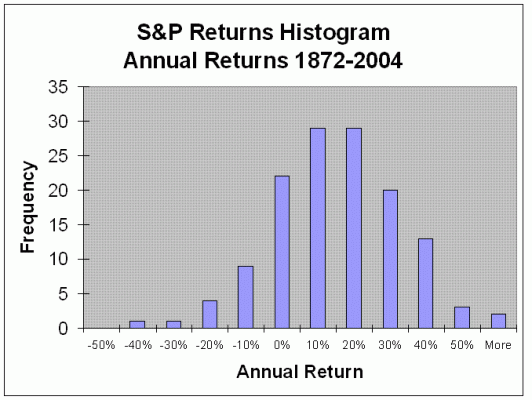Quote from: kcowan on January 09, 2007, 11:45:22 AM
The reason I did the simple spreadsheet is to avoid the mistake in this thinking. Inflation only applies to your spending. So SWR of 4% will decline as the portfolio returns more than 3.5%. Plus the easiest thing to focus on is spending because investment returns are influenced by many things outside our control.
kcowan,
I still stand by my logic, although reasonable people can differ as to how to best visualize this problem.
My point was that you can remove the inflation variable from the equation by subtracting it out of the portfolio growth rate up front. Maybe you don't find this intuitive and would rather focus on the spending side, but calculation wise, it's six for one and half-a-dozen for the other (except for taxation differences).
The engine that powers spending in retirement is the portfolio balance. The horsepower of that engine is affected by the portfolio's real rate of growth. As a portfolio's real rate of growth diminishes (especially below zero), the likelihood of retirement ruin increases, especially for longer retirements.
One reason we might see this problem differently is that I retired in my early 40s, so my time horizon is very long. I need to stay focused on keeping our portfolio's real value from declining or else my odds for success aren't good.
Jim



